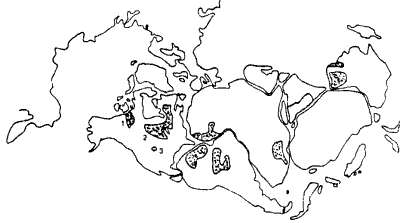 |
Science Frontiers ONLINE No. 49: Jan-Feb 1987 |
|
|
A Slice Of Ocean Crust In Wyoming
Tucked among Wyoming's Wind River Mountains is a region of exotic crustal rocks. The best explanation conventional geology has come up with is that they were formed some 2.5 billion years ago by geological processes not in operation today. G. Harper, however, thinks that these Wyoming rocks look very much like some of the slices of ocean crust (terranes) that continental drift's conveyor belt has plastered against North America's west coast. The conveyor belt is, of course, the ocean floor that dives under the continent. The more he looked, the more Harper was convinced that there, in the middle of the continent, was a substantial chunk of ancient ocean crust. The implications: continental drift and terrane plastering have been in operation for billions of years: "...from their very beginnings continents have been built up from the bits and pieces of plate tectonics." Some other geologists concur and point to similar rocks in northern Canada and around the Great Lakes.
(Kerr, Richard A.; "Plate Tectonics Is the Key to the Distant Past," Science, 234:670, 1986.)
Comment. If the continents have been slapped together in such a disorganized manner, have stratigraphy and geological dating been compromised?
Reference. "Exotic" terranes are discussed in ESR9 in Inner Earth. Information on this catalog here.
 |
Pangaea circa 200 million years ago. The stippled areas represent ancient terranes in the oldest parts of the continents. Containing greenstone belts, these areas are now thought to mark closures of ocean basins. |